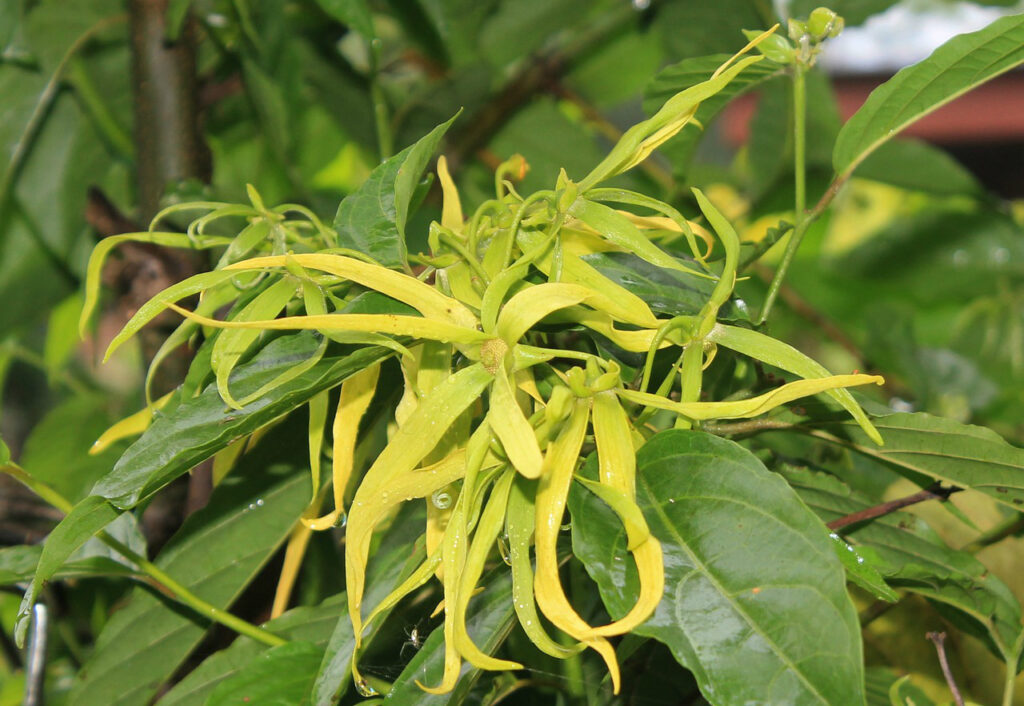How to Treat Fungus on Succulents: 5 Easy Natural Remedies
Succulents are cherished for their ease of care and endless varieties, but like any plant, they can fall prey to fungal infections. When you notice a change in the texture, color, or health of your succulents, it’s essential to consider the possibility of a fungal issue.
- Identifying Fungus on Succulents
- 5 Common Causes of Fungal Infections
- Prevention Strategies
- Treatment of Fungal Infections
- Practical Care Tips
- Advanced Fungal Issues
- Succulent Recovery and Health
- How to Treat Fungus on Succulents FAQs
- What treatments are effective for black fungus on succulents?
- Can soapy water be safely used on succulents to treat fungal issues?
- How can one naturally combat powdery mildew found on succulents?
- Which types of fungal infections commonly affect succulents, and how are they identified?
- Are there home remedies suitable for treating fungal infections in succulents?
- What steps should be taken to cure white fungus on cactus plants?
Treating fungus on succulents starts by identifying the problem—whether it’s powdery mildew, black spot, or root rot. Each type of fungus requires a specific approach, and it’s vital to act promptly to stop the spread and heal your plants.
Understanding the conditions that lead to fungal growth is key to both treatment and prevention.
- Overwatering is a common culprit, creating an environment where fungi can thrive.
- Adjusting your watering habits to ensure the soil can dry properly between waterings helps prevent the recurrence of fungal issues.
- Providing adequate airflow and sunlight can bolster your succulents’ defenses against fungi.
A range of effective methods are available for eradicating the fungus, which we’ll dive deeper into in this post.
Identifying Fungus on Succulents
Before attempting treatment, accurately identifying the presence of fungal disease is essential for the health of your succulents. Below, key indications of fungal infections are outlined for your awareness.
Common Signs and Symptoms
- Powdery Mildew: Look for a telltale white or gray powdery coating on leaves and stems. This is one of the most common fungal issues that affect succulents, indicating the presence of powdery mildew.
- Leaf Spots: Brown or black spots on leaves often represent a fungal disease called leaf spots. These may also have a yellow halo, indicating their infectious nature.
- Mold Issues: Sooty, black mold can develop on the surfaces of your succulent leaves as a result of fungal spores in the environment. Alternatively, gray mold may appear as fuzzy or woolly patches.
- Discoloration and Wilting: If you notice your succulent’s leaves turning yellow or the plant wilting without an apparent overwatering issue, this could be a sign of a fungal problem.
- Odd Growth Patterns: White spots or irregular growths on your succulent could be a symptom that fungus is present.
By recognizing these symptoms early, you can take prompt action to treat the infection and prevent further damage to your plants. Remember, healthy succulents should have firm, colorful leaves indicative of good health.
5 Common Causes of Fungal Infections
Understanding the causes of fungal infections in succulents is crucial to preventing and treating these issues effectively. Fungi thrive under certain conditions that can often be controlled with careful attention to environmental factors and cultural practices.
Environmental Factors
Humidity: High levels of humidity, especially when paired with poor air circulation, create an ideal setting for fungal infections. Ensuring your succulents are in a well-ventilated area where air can freely circulate helps mitigate the risk of infections.
Moist Conditions: Overhead watering can leave moisture on leaves, which is conducive to fungal growth. Water at the base of your plants to keep the foliage dry and reduce the chance of infection. More on this later.
Cultural Practices
Watering: Overwatering is a common cause of fungal infections in succulents. These plants prefer a ‘soak and dry’ method, meaning you should allow the soil to completely dry out between waterings. This prevents the excessively moist soil that fungi favor.
Soil: The use of well-draining soil is essential. Succulents need soil that doesn’t hold on to water for too long. Ensure your soil mixture is appropriate for succulents to avoid creating a humid environment at the roots.
Succulent soils are often sandier in texture and very well-draining. If your soil is more clay-like, clumpy, or overly dense, it’s definitely not ideal.
Dust on Leaves: Dust accumulation can block sunlight and reduce the plant’s ability to combat fungal growth. Cleaning off dust regularly can help maintain the health of your succulents and deter fungal infections.
Prevention Strategies
Successfully preventing fungus in succulents hinges on effective soil and water management, ensuring proper air circulation and sunlight exposure, and implementing diligent pest control measures.
These practices will create an environment that is less hospitable to fungal growth and more conducive to the health of your succulents.
Soil and Water Management
Soil: Use well-draining soil tailored for succulents to prevent moisture buildup. Sterilize your potting mix to kill off potential pathogens before planting.
Watering: As mentioned earlier, water your succulents at the base and avoid getting water on the leaves. There’s no need to drench the entire plan.
Ensure the potting mix is dry before you water again; succulents thrive on a ‘soak and dry’ approach rather than frequent watering. Letting your plant dry in between waterings may be the best way to prevent fungus.
Air Circulation and Sunlight
Air Circulation: Increase airflow around your succulents by not overcrowding them. Good air movement helps keep the foliage dry and reduces fungal problems.
Sunlight: Provide plenty of sunlight or adequate grow lights for indoor plants. Succulents require a certain amount of light to maintain their health and keep fungal issues at bay.
Pest Control
Aphids, mealybugs, scales, and whiteflies are more than just nuisances; they can spread disease. Regularly inspect your plants and isolate new additions to your collection. Treat infestations promptly with a natural solution like neem oil or insecticidal soap to prevent pests from weakening your plants or creating conditions favorable to fungal growth.
We’ll take a deeper look at the treatment methods below.
Treatment of Fungal Infections
When tackling fungal infections on your succulents, it’s important to consider both natural and chemical treatments that are effective against fungal growth. Both methods, when used correctly, can help you control and eliminate the problem.
5 Natural Remedies to Treat Fungus on Succulents
1.) Baking Soda Mixture: A baking soda solution can be an economical and safe way to treat fungal issues in your plants. To make a DIY Fungicide, mix one tablespoon of baking soda with half a teaspoon of liquid, non-detergent dish soap in a gallon of water.
Apply this spray to the affected areas, ensuring that the plant is not under direct sunlight at the time of application to avoid leaf burn.
2.) Neem Oil: Neem oil stands out as a natural and effective treatment for inhibiting succulent fungus. It not only treats fungal infections but also deters pests. Apply neem oil to the affected parts of the plant, making sure to follow label instructions for dilution and application frequency.
3.) Garlic Extract: Garlic contains natural antifungal properties. Crush a few cloves of garlic, steep in water, strain, and then spray onto the succulents to prevent fungal growth.
4.) Milk Spray: Diluted milk spray may help manage fungal diseases due to its antiseptic qualities. Mix one part of the milk with two parts of water and spray onto the plant’s leaves.
5.) Hydrogen Peroxide: A solution made from one part hydrogen peroxide to four parts water can be effective in treating fungus on succulents.
Chemical Fungicides
Commercial Fungicides: If natural methods don’t yield the desired results, you might turn to a commercial fungicide, choosing a product that’s labeled safe for use on succulents.
Copper-based fungicides can be effective; however, it’s important to follow the manufacturer’s instructions on properly applying them to avoid harming your plant.
Remember, when using any natural or chemical treatment, the key is to get the mixtures right. Do not give into the temptation to make a “strong” fungicide mixture, regardless of your method. That could burn or kill your succulents.
Practical Care Tips
Effectively treating fungus on succulents revolves around proper watering, feeding, and soil maintenance. These preventive measures can significantly reduce the risk of fungal infections.
Watering and Feeding
When watering your succulents, ensure you do so at the base of the plant to keep the leaves dry, as damp foliage is susceptible to fungal growth.
Use a water and hydrogen peroxide mixture (1 part hydrogen peroxide to 4 parts water) to help rid your plants of fungi.
For feeding, combine fertilizer with water appropriately, but remember that during cooler months, succulents require less frequent watering as their growth slows down.
Repotting and Soil Replacement
Select a well-draining soil, ideally mixed with sand, to ensure excess water doesn’t linger around the roots.
Re-pot your succulents if the current soil is contaminated or if the plant has outgrown its current pot. Always dispose of old soil if your plant is infected. When repotting, use fresh soil from a sealed, uncontaminated bag to minimize the risk of introducing pathogens.
Sterilizing your potting mix by baking it at 200 degrees Fahrenheit before use can also be an effective precautionary measure. This is especially recommended if you’re repotting rare species or otherwise expensive succulents.
Advanced Fungal Issues
In this section, we address how to tackle succulent problems when they escalate beyond typical concerns. Advanced fungal issues often manifest as severe infections that can threaten the vitality of your plants.
Dealing with Severe Infections
When faced with advanced fungal diseases like root rot, fusarium wilt, and black spot, it’s critical to act promptly to salvage the affected succulent.
These conditions are typically caused by pathogens such as Fusarium oxysporum, Botrytis cinerea, and Phytophthora.
Root and Crown Rots: If you notice your plant’s roots turning brown or black and becoming soft, your succulent may be suffering from root or crown rots. This is often due to excessive moisture and poor drainage.
- Identify: Check for blackened roots and a base that easily separates from the soil.
- Isolate: Immediately remove the affected succulent to prevent the spread of fungal spores.
- Treat: Trim away rotted roots immediately and repot into fresh, sterile soil. Use a fungicide specifically recommended for treating root rot in succulents. Dip the root end where you cut in ground cinnamon to help prevent new infections.
Fusarium Wilt: This fungal disease is characterized by yellowing leaves and stunted growth, eventually leading to the collapse of the succulent.
- Identify: Look for yellow or brown vascular tissue when cutting a cross-section of the stem.
- Isolate: Isolate the affected plant to prevent the spread of Fusarium oxysporum.
- Treat: Remove affected tissue and apply a fungicide. Unfortunately, in many cases, plants with Fusarium wilt may not be salvageable.
Black Spot and Lesions: Dark spots on leaves may indicate a black spot fungus or lesions from anthracnose.
- Identify: Look for black spots on the foliage, which may be surrounded by a yellow halo.
- Isolate: Separate the plant to avoid infecting others.
- Treat: Prune the infected parts. Improve airflow around the plant and ensure the plant receives appropriate sunlight. Apply a fungicide recommended for black spots or anthracnose.
Botrytis Cinerea and Anthracnose: Fungal diseases that cause grey mold or dark, sunken spots on leaves require immediate attention.
- Identify: Grey, fuzzy mold, or dark lesions, often after cool, humid conditions.
- Isolate: It’s a good idea to place the plant away from others to prevent the spreading of the spores.
- Treat: Trim away the infected area, increase light and airflow, and consider fungicide treatment.
For all advanced fungal infections, improving the plant’s living conditions is imperative.
Ensure good airflow, adequate sunlight, and appropriate watering practices. Always use well-draining soil and clean pots to prevent recurrence.
In severe cases, chemical treatments may be necessary but always start with the least toxic options. It’s essential to read and follow all label instructions on fungicides to avoid harming your plant and the environment.
Succulent Recovery and Health
After addressing fungal issues, your succulents require diligent care for the recovery process. The key to this process is monitoring their progress and understanding how their physiological needs affect recovery.
We’ve got to mention an unfortunate truth, though, and that is that your succulents will not always be able to recover after a fungal infection. But, it’s definitely worth remediating the problem because oftentimes, they will recover.
Monitoring and Ongoing Care After Mitigation
Regularly inspect your succulents for signs of recovery or lingering issues. Pay particular attention to previously infected leaves and the emergence of new, healthy growth. Establish a routine:
- Daily: Check for dead leaves and remove them to prevent decay.
- Weekly: Assess watering needs based on soil dryness and ensure proper drainage.
Keep an eye on humidity levels; too much moisture can cause further fungal problems. To do that easily, you can purchase a hygrometer for a few dollars online.
Improving air circulation around your plants can help control humidity. If a plant is struggling, definitely keep it isolated to prevent potential spread to your succulent collection.
Kalanchoe and jade plants, common in collections, will benefit from these practices, improving their ability to recover and flourish post-treatment.
How to Treat Fungus on Succulents FAQs
What treatments are effective for black fungus on succulents?
To manage black fungus on your succulents, a solution with hydrogen peroxide and water may help. Mixing 1 part hydrogen peroxide with 4 parts water and spraying it on affected areas is known to treat the fungus without damaging the plant.
Can soapy water be safely used on succulents to treat fungal issues?
Yes, you can safely use soapy water to address fungal problems on your succulents. A mixture of baking soda and mild dish soap diluted in water can be an effective fungicide but always test a small area first as some succulents may be sensitive.
How can one naturally combat powdery mildew found on succulents?
Natural remedies to fight powdery mildew include neem oil or a milk spray solution, which can act as fungicides. Regularly inspect your plants and apply these treatments to affected areas to prevent spread.
Which types of fungal infections commonly affect succulents, and how are they identified?
Succulents are commonly affected by fungi like powdery mildew, which appears as a white, powdery coating, and black sooty mold. These infections can typically be identified by visual inspection, looking for unusual spots or growths on leaves and stems.
Are there home remedies suitable for treating fungal infections in succulents?
As mentioned above and earlier in the post, home remedies for treating fungi on succulents include neem oil, baking soda solutions, and milk spray. These options are valuable for those seeking natural methods of treatment.
What steps should be taken to cure white fungus on cactus plants?
To cure white fungus on cacti, remove any affected parts with a sterile instrument and apply a fungicide treatment. If the problem persists, repotting in fresh, sterile soil may be necessary to eliminate any remaining fungal spores in the soil.


